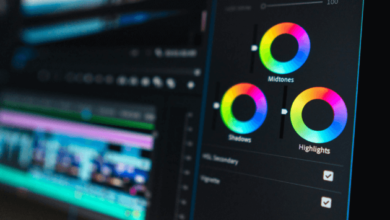The Click-Through Rate Formula and How to Use It

In the dynamic world of digital marketing, success hinges on the ability to measure, analyze, and improve performance. Among the many metrics available, Click-Through Rate (CTR) stands out for its clarity and practical value. CTR offers a concise view of how effectively a digital element—be it an ad, email link, or webpage call-to-action—captures interest and prompts action. This guide explains the click-through rate formula, demonstrates its calculation, and outlines how to apply it for smarter, results-driven marketing.
Breaking Down the Basics: What Is CTR?
Click-Through Rate measures the percentage of people who click on a digital element after being exposed to it. Whether it’s a search ad, social media post, or newsletter link, CTR helps determine how compelling your content is.
CTR bridges the gap between visibility and engagement. While impressions show reach and conversions reveal outcomes, CTR highlights the first moment of action—a signal that your message is cutting through the noise.
Its value lies in its simplicity. You don’t need advanced analytics to use it, yet it delivers powerful insights that inform creative direction, targeting, and budget strategy.
The Formula Unveiled: A Simple Calculation
The standard CTR formula is:
CTR = (Clicks ÷ Impressions) × 100
For example, if a banner ad is displayed 5,000 times and receives 150 clicks:
CTR = (150 ÷ 5,000) × 100 = 3%
This means 3% of viewers were motivated to click. The formula is universal across platforms and content types, making it an essential performance metric in nearly every digital marketing channel.
See also: The Future of AI Image Generators in Education
Step One: Collecting the Right Data
To calculate CTR, you need two reliable inputs:
- Clicks: How many times users clicked on the link or ad
- Impressions: How many times the content was displayed to users
These figures are typically available in marketing platforms such as Google Ads, Meta Business Suite, or email marketing tools like Mailchimp.
Data accuracy is key. Ensure tracking tools are configured correctly—missing clicks or undercounted impressions can distort your CTR and lead to misinformed decisions. Always validate the numbers before calculating.
Applying the Formula: Real-World Scenarios
CTR is relevant across marketing channels. Here are two common examples:
- Email Campaign: Sent to 10,000 subscribers, with 400 clicks
CTR = (400 ÷ 10,000) × 100 = 4% - Search Ad: Receives 2,000 impressions and 50 clicks
CTR = (50 ÷ 2,000) × 100 = 2.5%
While the calculation remains consistent, interpretation depends on context. A 4% email CTR might indicate high engagement, whereas a 2.5% search ad CTR could be considered average or below standard, depending on the industry and keyword targeting.
Interpreting the Result: What Does It Tell You?
A CTR score isn’t just a number—it’s a reflection of audience engagement:
- High CTR (3% or more): Suggests your content is relevant and compelling
- Low CTR (under 1%): Signals issues with targeting, messaging, or creative
The meaning of a CTR score varies by format and platform. Consider these rough benchmarks:
- Search ads: 2–3% average
- Display ads: 0.5–1%
- Email campaigns: 3–5%
- Social media ads: 1–2%
Comparing your performance to industry averages and past campaigns turns CTR into a diagnostic tool for campaign health.
Using CTR to Optimize Campaigns
CTR becomes most powerful when used to guide optimization. A low CTR highlights areas to improve, such as:
- Ad copy: Refine the message or call-to-action
- Visuals: Use stronger images or more relevant graphics
- Targeting: Ensure the right audience is seeing your content
For example, a retailer running an ad with a 0.8% CTR might revise the headline or highlight a discount, resulting in a 1.5% CTR. These small improvements can significantly increase ROI over time.
High CTRs, on the other hand, point to what’s working. A 6% CTR on a video ad may prompt additional investment in video content or similar messaging themes. Paired with A/B testing, CTR enables a data-driven approach to creative decisions.
Beyond the Click: Aligning with Bigger Goals
CTR is a valuable engagement metric, but it doesn’t tell the whole story. A high CTR doesn’t guarantee business outcomes like conversions or sales.
- Example: A travel ad may achieve a 9% CTR, but if the landing page causes confusion, bookings may remain low.
For a complete performance picture, pair CTR with metrics such as:
- Conversion Rate (CVR)
- Return on Ad Spend (ROAS)
- Cost per Acquisition (CPA)
Together, these metrics ensure that interest converts into meaningful results. Avoid chasing high CTRs at the expense of user experience or trust.
Pitfalls to Avoid: Ensuring Accurate Insights
Common mistakes can weaken CTR analysis:
- Incomplete data: Missing impressions or clicks will skew the score
- Misleading averages: Aggregated results may hide underperforming segments
- Context blindness: Applying the same expectations across all platforms can distort interpretation
To avoid these issues:
- Segment CTRs by audience, device, or placement
- Validate tracking setups regularly
- Benchmark results within the proper context
Precision ensures that CTR insights lead to actionable strategies, not guesswork.
Scaling Success with CTR Insights
When tracked consistently, CTR becomes a valuable growth lever. Monitoring trends over time helps marketers spot what’s gaining traction—or losing relevance.
- Example: A small business with a $500 monthly ad budget might use a 3% CTR to justify scaling to $5,000, knowing the message connects.
It also helps conserve budget. By pausing or adjusting ads with poor CTRs—say, under 0.3%—businesses can reallocate spend to top performers, maximizing impact without increasing investment.
Strategic Mastery Through a Simple Equation
The click-through rate formula is deceptively simple, yet immensely powerful. It offers a clear, fast, and reliable way to assess how content performs at the point of engagement. More importantly, it acts as a launchpad for optimization—revealing what resonates, what doesn’t, and where to go next.
When used thoughtfully and in context, CTR provides actionable insights that sharpen campaigns, align efforts with business goals, and fuel scalable digital growth. For marketers and businesses alike, it’s not just a formula—it’s a strategic asset





